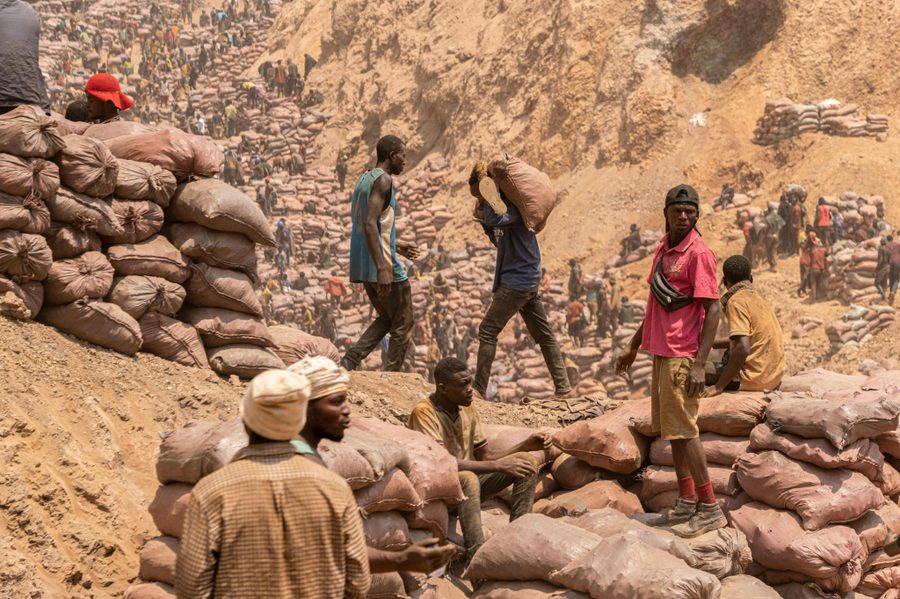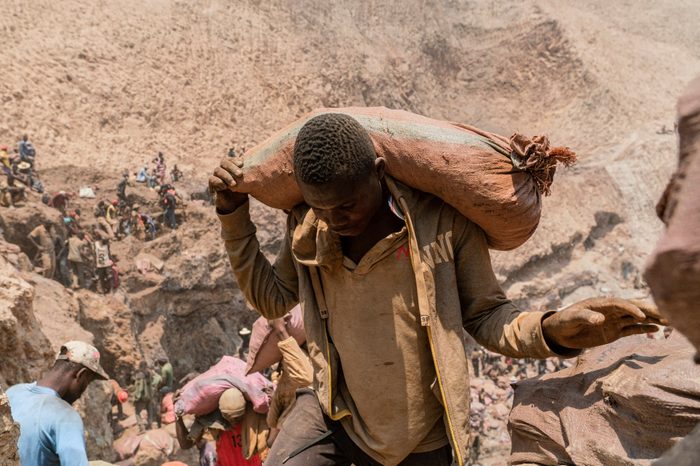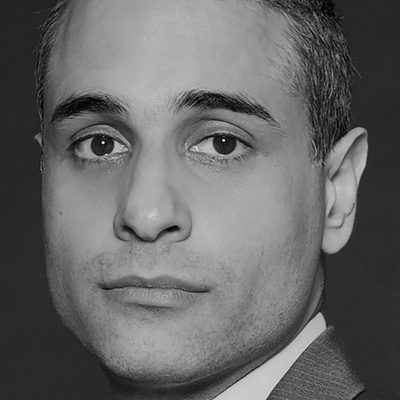Your Smartphone Has a Human Cost
Cobalt Red examines the tech-fueled “modern-day slavery” in the Congo
Siddharth Kara

We are all aware of just how much today’s world depends on fossil fuels. Oil, coal, and natural gas are extracted in every corner of the globe, beneath oceans, deserts, mountains, and land. Imagine for a moment if almost three-fourths of all fossil fuel beneath the earth’s surface was instead extracted from a single patch of earth roughly four hundred by one hundred kilometers in size. Imagine that within this patch of earth, approximately half the oil was located in and around a single city and that the deposits were shallow enough for anyone to access with a shovel. This would surely be the most indispensable city in the world. Massive drilling companies would flock to it to stake their claims on the riches. So too would the local population from miles around. Violence would erupt to secure control of valuable territory. Preservation of the environment would become an afterthought. Regional governance would be marred by corruption. Profits would be asymmetrically distributed, with powerful stakeholders at the top of the chain accruing the most benefit while the local inhabitants languished. This is the exact situation taking place today with a crucial mineral that will be as important to our future as fossil fuels have been to our past. The mineral is cobalt, and the city is Kolwezi.
Kolwezi is tucked in the hazy hills of the southeastern corner of the Democratic Republic of the Congo (DRC). Although most people have never heard of Kolwezi, billions of people could not conduct their daily lives without this city. The batteries in almost every smartphone, tablet, laptop, and electric vehicle made today cannot recharge without Kolwezi. The cobalt found in the dirt here provides maximum stability and energy density to rechargeable batteries, allowing them to hold more charge and operate safely for longer periods. Remove cobalt from the battery, and you will have to plug in your smartphone or electric vehicle much more often, and before long, the batteries may very well catch on fire. There is no known deposit of cobalt-containing ore anywhere in the world that is larger, more accessible, and higher grade than the cobalt under Kolwezi.

Cobalt is typically found in nature bound to copper, and the copper-cobalt deposits in the Congo stretch in varying degrees of density and grade along a four-hundred-kilometer crescent from Kolwezi to northern Zambia, forming an area called the Central African Copper Belt. The Copper Belt is a metallogenic wonder that contains vast mineral riches, including 10 percent of the world’s copper and about half the world’s cobalt reserves. In 2021, a total of 111,750 tons of cobalt representing 72 percent of the global supply was mined in the DRC, a contribution that is expected to increase as demand from consumer-facing technology companies and electric vehicle manufacturers grows each year.1 One might reasonably expect Kolwezi to be a boom town in which fortunes are made by intrepid prospectors. Nothing could be further from the truth. Kolwezi, like the rest of the Congolese Copper Belt, is a land scarred by the mad scramble to feed cobalt up the chain into the hands of consumers across the globe. The scale of destruction is enormous, and the magnitude of suffering is incalculable. Kolwezi is the new heart of darkness, a tormented heir to those Congolese atrocities that came before— colonization, wars, and generations of slavery.
The first European to cross the heart of the African continent in a single trip from east to west, British lieutenant Verney Lovett Cameron, ominously wrote this about the Congo in The Times on January 7, 1876:
The interior is mostly a magnificent and healthy country of unspeakable richness. I have a small specimen of good coal; other minerals such as gold, copper, iron and silver are abundant, and I am confident that with a wise and liberal (not lavish) expenditure of capital, one of the greatest systems of inland navigation in the world might be utilized, and from 30 months to 36 months begin to repay any enterprising capitalist that might take the matter in hand.
Within a decade of Cameron’s missive, “enterprising capitalists” began pillaging the “unspeakable richness” of the Congo. The great Congo River and its capillary-like tributaries provided a built-in system of navigation for Europeans making their way into the heart of Africa, as well as a means by which to transport valuable resources from the interior back to the Atlantic coast. No one knew at the outset that the Congo would prove to be home to some of the largest supplies of almost every resource the world desired, often at the time of new inventions or industrial developments — ivory for piano keys, crucifixes, false teeth, and carvings (1880s), rubber for car and bicycle tires (1890s), palm oil for soap (1900s+), copper, tin, zinc, silver, and nickel for industrialization (1910+), diamonds and gold for riches (always), uranium for nuclear bombs (1945), tantalum and tungsten for microprocessors (2000s+), and cobalt for rechargeable batteries (2012+). The developments that sparked demand for each resource attracted a new wave of treasure seekers. At no point in their history have the Congolese people benefited in any meaningful way from the monetization of their country’s resources. Rather, they have often served as a slave labor force for the extraction of those resources at minimum cost and maximum suffering.
The rapacious appetite for cobalt is a direct result of today’s device-driven economy combined with the global transition from fossil fuels to renewable sources of energy. Automakers are rapidly increasing production of electric vehicles in tandem with governmental efforts to reduce carbon emissions emerging from the Paris Agreement on climate change in 2015. These commitments were amplified during the COP26 meetings in 2021. The battery packs in electric vehicles require up to ten kilograms of refined cobalt each, more than one thousand times the amount required for a smartphone battery. As a result, demand for cobalt is expected to grow by almost 500 percent from 2018 to 2050 and there is no known place on earth to find that amount of cobalt other than the DRC.
Cobalt mining in towns like Kolwezi takes place at the bottom of complex supply chains that unfurl like a kraken into some of the richest and most powerful companies in the world. Apple, Samsung, Google, Microsoft, Dell, LTC, Huawei, Tesla, Ford, General Motors, BMW, and Daimler-Chrysler are just some of the companies that buy some, most, or all their cobalt from the DRC, by way of battery manufacturers and cobalt refiners based in China, Japan, South Korea, Finland, and Belgium. None of these companies claims to tolerate the hostile conditions under which cobalt is mined in the Congo, but neither they nor anyone else are undertaking sufficient efforts to ameliorate these conditions. In fact, no one seems to accept responsibility at all for the negative consequences of cobalt mining in the Congo — not the Congolese government, not foreign mining companies, not battery manufacturers, and certainly not mega-cap tech and car companies. Accountability vanishes like morning mist in the Katangan hills as it travels through the opaque supply chains that connect stone to phone and car.
The flow of minerals and money is further obscured by a web of shady connections between foreign mining companies and Congolese political leaders, some of whom have become scandalously rich auctioning the country’s mining concessions while tens of millions of Congolese people suffer extreme poverty, food insecurity, and civil strife. There was not a single peaceful transfer of power in the Congo from 1960, when Patrice Lumumba was elected to be the nation’s first prime minister, until 2019, when Félix Tshisekedi was elected. In the interim, the country was subjected to one violent coup after another, first with Joseph Mobutu, who ruled the Congo from 1965 to 1997, followed by Laurent-Désiré Kabila’s reign from 1997 to 2001, followed by his son Joseph Kabila from 2001 to 2019. I use the words rule and reign because Mobutu and the Kabilas ran the country like despots, enriching themselves on the nation’s mineral resources while leaving their people to languish.

As of 2022, there is no such thing as a clean supply chain of cobalt from the Congo. All cobalt sourced from the DRC is tainted by various degrees of abuse, including slavery, child labor, forced labor, debt bondage, human trafficking, hazardous and toxic working conditions, pathetic wages, injury and death, and incalculable environmental harm. Although there are bad actors at every link in the chain, the chain would not exist were it not for the substantial demand for cobalt created by the companies at the top. It is there, and only there, where solutions must begin. Those solutions will only have meaning if the fictions promulgated by corporate stakeholders about the conditions under which cobalt is mined in the Congo are replaced by the realities experienced by the miners themselves.
Today’s tech barons will tell you that they uphold international human rights norms and that their particular supply chains are clean. They will assure you that conditions are not as bad as they seem and that they are bringing commerce, wages, education, and development to the poorest people of Africa (“saving” them). They will also assure you that they have implemented changes to remedy the problems on the ground, at least at the mines from which they say they buy cobalt. After all, who is going to go all the way to the Congo and prove otherwise, and even if they did, who would believe them?
Excerpted from Cobalt Red: How the Blood of the Congo Powers Our Lives by Siddharth Kara. © 2023 by the author and reprinted by permission of the St. Martin’s Press Publishing Group.
Siddharth Kara is Associate Professor of Human Trafficking and Modern Slavery at Nottingham University and the author of Cobalt Red: How the Blood of the Congo Powers Our Lives (St Martin’s Press, January 2023).





